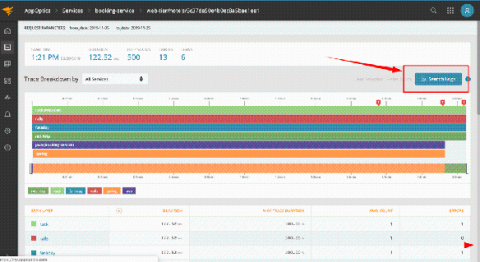Operations | Monitoring | ITSM | DevOps | Cloud
Latest News
Inventory Monitoring for Your Cloud Infrastructure
Managing agile software deployment for cloud infrastructure can be challenging. Deployments should be automated whenever possible to ensure consistent version management. Nevertheless, it can happen that identical software versions are not deployed to all servers. Such imperfect version management is a potential time-bomb. Distributed systems and microservices often rely on the deployment of the exact same software version installed on every cluster node.
Take Troubleshooting Up a Notch and Add Context to Your Logs
Integrating Threat Intelligence into Graylog 3+
In this post, I will describe in detail how to use the Threat Intelligence plugin that ships with Graylog. I’ll start with the steps necessary to prepare your data, then explain how to activate the feature and how to configure it for use.
Installing the ELK Stack on Alibaba Cloud: Step by Step Guide
The ELK Stack is the world’s most popular open source log analytics and log management platform. Together, the four main components of the stack — Elasticsearch, Logstash, Kibana and Beats, provide users with a powerful tool for aggregating, storing and analyzing log data. In production environments, the ELK Stack requires an infrastructure flexible and powerful enough to power it.
Five reasons to choose Log360, part 1: User-friendly deployment and UI
SIEM solutions are a must-have in any organization’s security toolkit. They allow you to analyze events from your network, gain actionable insights into network activity, and detect and mitigate data breaches and other security incidents, all while remaining compliant with regulatory mandates. Log360 is ManageEngine’s comprehensive SIEM offering that helps organizations meet a wide range of auditing, security, and compliance needs.
5 Splunk Alternatives - Faster, Affordable Log Management Solutions
Learn the best Splunk alternative, what to look for in alternative solutions, and other factors like logging features, speed, ease of use, deployment, scalability, and cost.What Does Splunk Do?Since its first release in 2007, Splunk quickly became one of the leading log management solutions. Its focus on enterprise grade log analysis and security incident and event management (SIEM) made it the de facto choice for organizations generating large volumes of log files and machine data.
How to Monitor Activity in Your IBM Cloud with LogDNA
Cloud environments are becoming increasingly complex, with applications and even infrastructures changing constantly. Despite their dynamic nature, these environments must be monitored constantly for teams to ensure the stability, security, and performance of workloads running in them. Tracking these infrastructure changes is one of the most important—and one of the most difficult—parts of maintaining a cloud environment.
How to Defend Your Business Against SQL Injections
One of the oldest (but often neglected) security vulnerabilities is SQL injection. One common scenario goes like this: An unsuspecting programmer writes an application that accepts input from the user which serves as a parameter to retrieve or store data from a database (e.g., a web login form). The programmer writes a dynamically populated SQL query inside the app, based on user input like username and password (see Image 1 for reference).










